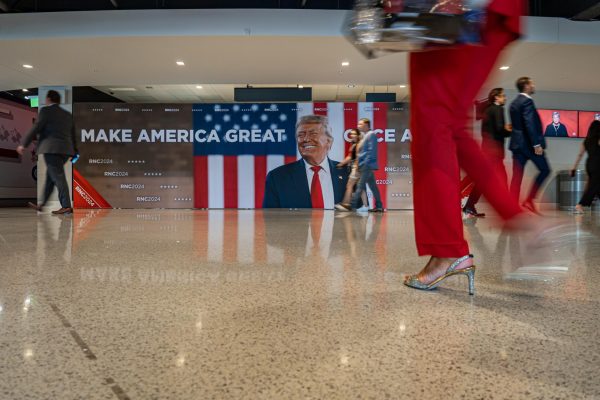Screening for bombs protects commuters
November 3, 2014
The Chicago Police Department is set to begin random screenings for explosives at public transit stations Nov. 3, joining other major cities that have adopted similar programs, such as New York City.
CPD officers will choose one Chicago Transit Authority rail station every day and randomly select which passengers to screen by using a number system. The CPD will initiate the program during peak usage times and at least four officers will perform “swab-tests,” according to an Oct. 24 CPD press release. Officers will swab the outside of passengers’ bags with an explosive-detecting stick that will register either positive or negative results. The process will take one minute, according to the press release.
Although there is no known threat to Chicago or its transit system at this time, the program is an effective way to deter possible threats and protect citizens.
Some Chicago commuters question the effectiveness of the program. Critics argue that because they are only choosing one station a day, someone who wants to pose a threat will simply strike at a different rail station if he or she sees officers that day. Because the officers will choose passengers at random, the likelihood of picking someone who poses an actual threat is slim. Critics raise good points, but having a preventive program is better than not having one at all. More than 529 million people traveled on the CTA bus and rail systems in 2013, and it is important the agency provides protection for commuters.
The screening program is a great solution, considering the difficulty of implementing preventive measures similar to those at airports because of the huge numbers involved. It would also be ideal to have it implemented at all rail stations, but that measure is unrealistic because of the current staff shortage plaguing CPD.
Other major cities’ transit systems have been targets of terrorist bombings before. In 2004, Madrid’s Cercanías train system was bombed, killing 191 people and wounding more than 1,800. The attack is thought to have been carried out by al-Qaeda, but the attacker was never confirmed. On July 7, 2005, three bombs exploded during the morning rush hour on the London Underground trains. The attack killed 52 people. As a result, England passed the Terrorism Act of 2006, which enhances penalties for terrorist actions including a 28-day detention period.
Since these attacks, the importance of heightened security on mass transit systems has taken on new urgency. After 9/11, Congress established the Transportation Security Administration, which federalized all airline passenger and baggage screenings to enhance safety. Public rail and bus systems have not received as much attention, leading to concerns that terrorists may target these “softer” systems, according to the Jan. 11, 2013, Congressional Research Service Report for Congress.
Congress acknowledges the difficulty of applying aviation safety measures—such as screenings—to public transit considering the volume of riders, according to the report. Recognizing this obstacle and the tight budgets of public transit systems, Congress passed the Implementing Recommendations of the 9/11 Commission Act of 2007, authorizing $3.5 billion in grants for public transportation security. Congress recommends public transit systems adopt video surveillance, increase security personnel and conduct random bag inspections.
By implementing this new program, Chicago now practices all of the above safety measures. The city has increased video surveillance on trains and buses, including the installation of more surveillance cameras, as reported March 10 by The Chronicle. Currently, there are transit police and CPD officers at rail stations.
The program admittedly has flaws, like the possibility of racial and ethnic profiling, but its core purpose is to protect, and the CPD should be applauded for the effort.







